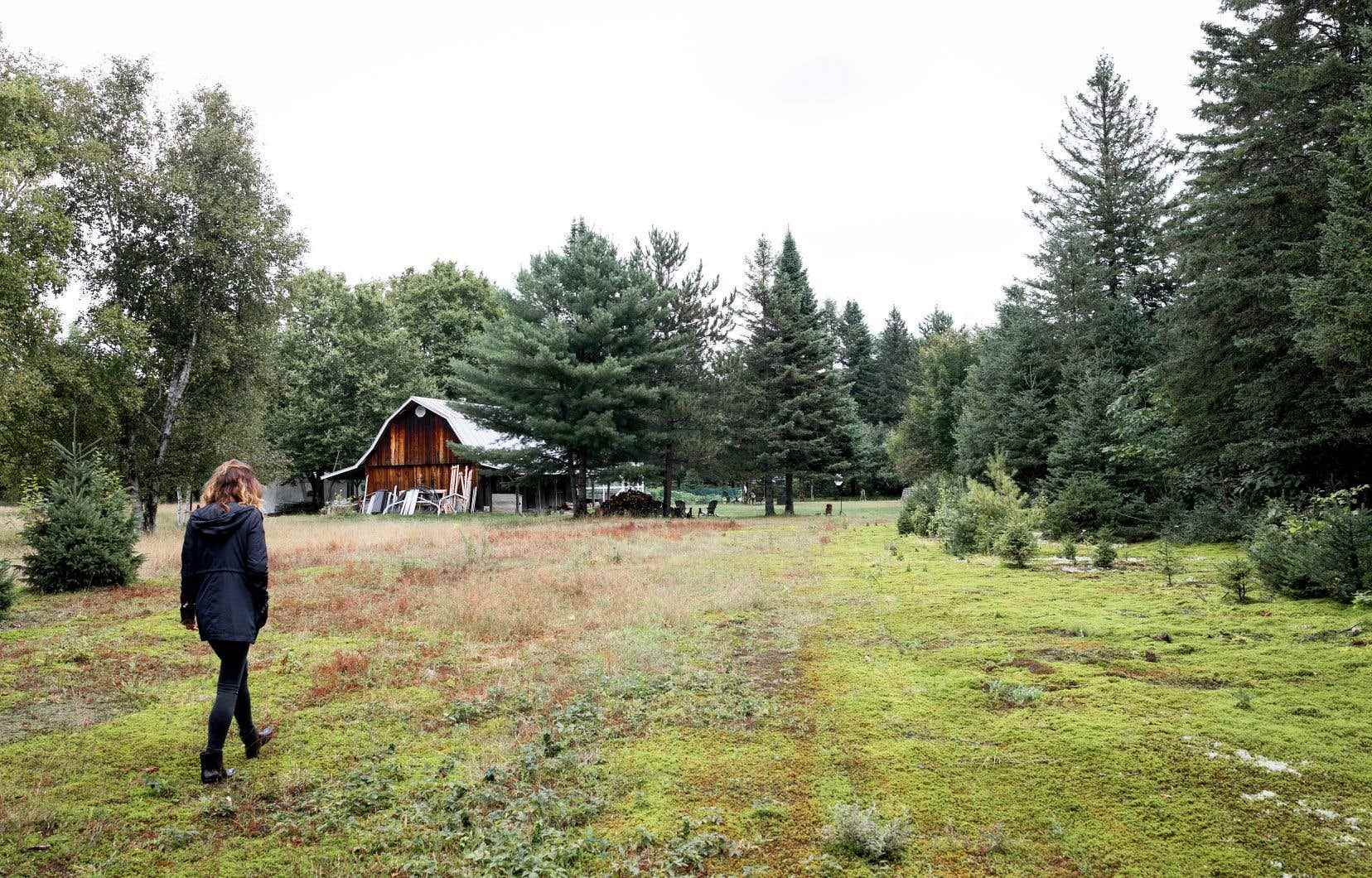The suburbs and the countryside have become the new El Dorado for a growing number of residents of large centres, stimulating urban sprawl that threatens natural environments, agricultural land and the supply of drinking water, in addition to increasing the pressure on municipalities called upon to manage unbridled population growth with limited resources. Second article in a series of three on the urban sprawl that is eating away at Quebec.
Less expensive, more spacious housing, access to green spaces and a quieter living environment: there are many reasons to justify the massive departure, in recent years, of thousands of residents of cities like Quebec and Montreal to suburbs as well as in rural areas.
“Finally, we found our little paradise,” smiles Catherine Montmagny-Grenier, who left her apartment in Montreal eight months ago to settle on a former farmland in Mandeville. The municipality of Lanaudière, with just over 2,300 souls, has seen its population increase by 8% in five years, between 2016 and 2021. “We said to ourselves: if we leave Montreal, it’s really to go to extreme”, adds the lecturer at the University of Montreal, who seized the opportunity of teleworking in the context of a pandemic to move to the countryside. “And I think we’ve never been happier. »
“I’m 42 years old and I thought I had toured Montreal and its activities. And I missed the greenery, ”says Corine Morin, who left her apartment in the Ville-Émard district of Montreal during the pandemic to go into exile in Sainte-Marie-de-Beauce, in the Chaudière- Appalachians.
She now lives with her boyfriend in a luxurious rental condominium included in a vast real estate project called “Quartier Orée”, which ultimately provides for the development of four five-storey buildings each with 60 rental units in a municipality of barely 13,500 inhabitants.
“We live in a place where our rooms are very large”, adds Mme Morin, who is delighted to benefit from the “comfort of a city” while remaining close to nature. She also bought land in Sainte-Marie to build her future home. “I was unable to buy in Montreal,” she confides.
Encroaching on farmland
The most recent demographic data from the Quebec Institute of Statistics (ISQ) eloquently bears witness to this exodus of city dwellers. The ISQ thus foresees a growth of approximately 16 to 21% of the population by 2041 in the Laurentians, in Estrie, in Montérégie and in Lanaudière, not far from Montreal, where the population should experience a meager growth of 3% in 20 years.
However, “there is no more building land, so if this continues [cette croissance démographique] _, it will be necessary to encroach on agricultural land, says Martine Demers, a real estate broker who manages the sale of properties and land in Lanaudière.
A situation that is not unrelated to real estate speculation that is going on in major centers, according to her. “People are going further because it is no longer possible for them to be close to the centers and the main attractions,” notes Ms.me Demers. She notes that even in L’Assomption and Joliette, property values are rising rapidly, prompting buyers to turn to smaller, more remote municipalities, such as Saint-Calixte-de-Kilkenny.
“The suburbs flee from themselves”, thus illustrates Gérard Beaudet, professor at the School of Urban Planning and Landscape Architecture at the University of Montreal. Once a certain threshold of development is reached in a municipality, we move further “to continue to achieve this ideal of the suburbs”, adds the urban planner.
The attraction of the suburbs and remote regions echoes an “ideal” typical of the “American dream”, well anchored in popular culture: that of living in a house, with a yard and a garage. “It’s very rooted in the imagination. That’s the challenge of densification, it’s to change this image, but it’s very powerful, ”raises the professor and member of the Center for Research on Territorial Development at the University of Quebec at Chicoutimi. , Martin Simard.
One-upmanship in the campaign
The outbidding around Montreal also comes in large part from residents of the metropolis in search of exile, notes broker Martine Demers. “Often, the big offers at higher prices are buyers who come from Montreal,” she notes, who are ready to pay a higher price for housing.
“Of course, for the same amount, you can have something much more interesting at a better price,” confirms Camille Blouin, who left Montreal to settle in Saint-Sauveur last February. The one that specializes in real estate investments has also started to move its marbles from the Quebec metropolis to this municipality in the Laurentians, where it has acquired “a few doors”, until now. “But I aspire to develop it further,” she says.
Further east, in the Quebec City metropolitan area, where population growth of 12.4% is expected over the next 20 years, according to the ISQ, the appeal of the suburbs and the countryside is also greater. stronger than ever, notes real estate broker Chantale Létourneau, who has a strong presence in Chaudière-Appalaches.
“Hobby farms and large lots with a view of the water are really our big sellers”, notes Mme Létourneau, who notes that many buyers “want to become self-sufficient” in terms of food, for example by raising chickens or a few cows on their land. “It’s really for them, their own consumption and becoming more independent,” she explains.
The real estate broker also notes that buyers from major centers are those who contribute the most to the escalation of real estate prices in this region south of Quebec, to the detriment of long-time residents of the sector. “Locals are suffering,” says Mme Letourneau.
